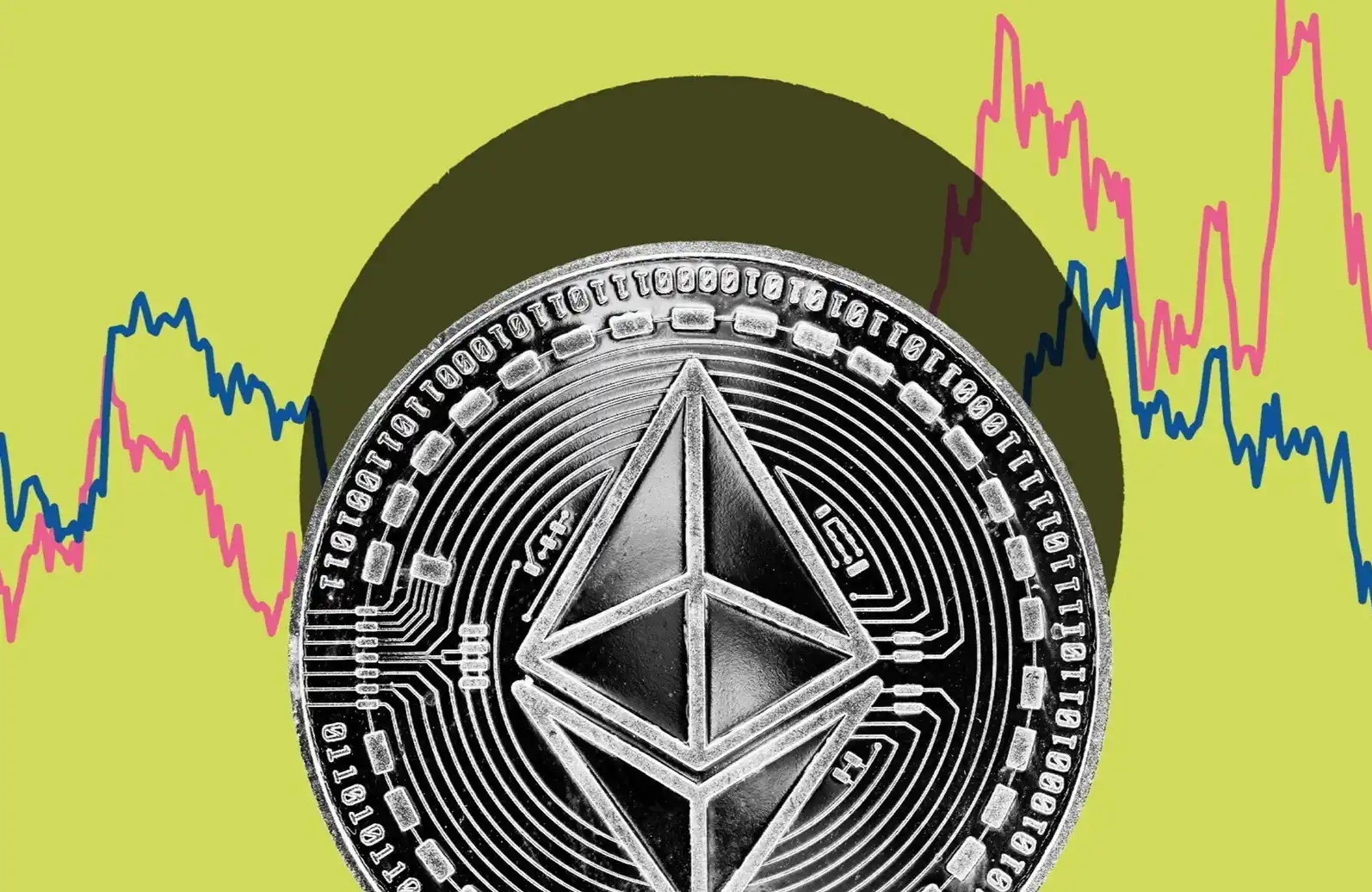Who Will Say Sorry to the Blockchain?
Original Title: "Who Will Apologize to Blockchain?"
Original Source: Meng Yan's Blockchain Thinking
The U.S. Congress passed the GENIUS Act, which was signed into law by President Trump on the afternoon of July 18, 2025, local time.
The United States passes many laws every year, but this stablecoin legislation will certainly be seen as one of the most important milestones in modern monetary history, comparable to the Bretton Woods Conference and Nixon Shock.
So far, discussions within the Chinese community regarding the U.S. dollar stablecoin have mainly focused on the innovative opportunities and wealth dividends it brings, with far less attention given to the challenges it poses. Fewer people are willing to explicitly point out that China is seriously lagging behind in this field and is in a very passive position.
And it's not just China; every non-dollar economy is now facing a severe challenge.
Due to the blockchain's technological permeability, the U.S. dollar stablecoin's near-total dominance, and the sudden U-turn in stablecoin legislation by the United States, taking a preemptive offensive approach, almost every country outside the U.S. is now unavoidably engaged in a battle to defend their monetary sovereignty. Some countries in Latin America and Africa, whether actively or passively, have opened their doors wide, allowing the U.S. dollar stablecoin to deeply penetrate and become widespread in the daily economic activities of their populations. In Brazil and Argentina, U.S. dollar stablecoin payments have already become deeply ingrained in daily life. In Nigeria, there are reports that up to one-third of economic activity is conducted using USDT. At this stage, these countries do not have the capacity to regulate these economic activities, let alone tax them. This means that this portion of their economic activity, in terms of management and finance, has escaped national control and has effectively been incorporated into the broad U.S. dollar economy.
Most countries cannot stand by and watch this digital economic colonization spread. But what should they do? Should they close their doors and create their own system, or should they outright defend and ban stablecoins? Over the past few years, many countries have done just that, and the fact is that this approach not only proves ineffective but also has a more serious potential problem: falling far behind in the long-term competition in finance, the Internet, AI, and other technology fields. In a sense, the challenges many countries face today are a direct consequence of past passivity.
A simple copy-and-paste approach is also unlikely to be effective. Recently, a large number of financial institutions and companies in multiple countries have announced ambitious stablecoin issuance plans. But let me be frank, the idea that obtaining a stablecoin issuance license, holding a grand launch event, and then riding the stablecoin economy rocket ship to soar high, or even gaining a foothold for the national currency in the on-chain economy, is overly naive. Issuing a stablecoin is easy; the real challenge is how you distribute it, expand beyond your own ecosystem, convince tens of millions or even hundreds of millions of users to ditch their U.S. dollar stablecoins and use yours. How do you attract thousands of innovators to develop wallets, custody solutions, payment systems, exchanges, lending platforms, and other applications around your stablecoin? How do you get e-commerce, gaming, live streaming, social media, and other mainstream Internet applications to adopt your stablecoin? If competing with the dollar in the traditional financial sector is already extremely difficult, then competing with the dollar in the stablecoin field increases the difficulty tenfold. To make even the slightest progress, enormous costs and long-term efforts must be exerted, accompanied by extremely clear judgment.
What to Do?
Before discussing a countermeasure, perhaps we should first ask a question: How did things come to this point?
Blockchain is not a suddenly emerging new technology, and the US dollar stablecoin did not achieve a market cap of 260 billion USD and 99% market dominance overnight. The stablecoin revolution was not a surprise attack, let alone a sneak attack, but a well-publicized major advance. Over the past decade, numerous experts in the blockchain field have repeatedly warned that blockchain and digital currency technology have the advantage of a dimension-reducing strike against the traditional financial system. It is a strategic technology that requires advance planning, early deployment, and seizing the initiative. If not actively dealt with, the future will be in a very passive situation. However, regulatory authorities and industry stakeholders in so many countries turned a deaf ear to this, insisting on dragging things into the current passive situation. In contrast, why is there such high sensitivity and a strong sense of catching up in the face of the progress of AI technology, which is also disruptive and carries huge risks? Why can mainstream public opinion display such a surge of enthusiasm and such an optimistic and naive attitude? If we could approach blockchain and stablecoins with half the enthusiasm shown for AI, then today, the US dollar would not dominate the stablecoin space, and other currencies would not be negligible. If there were two or three non-dollar stablecoins today that could compete on an equal footing with the dollar, then in the coming years, there would certainly be more variables and excitement in the stablecoin competition.
Unfortunately! Regrettably!
Where did things go wrong?
Was it a lack of timely attention? No. Starting from 2014, there have been multiple rounds of research and discussion on blockchain and digital assets in this country. Whether it's forward-looking exploration in academia, technological experiments in the industry, or even phase-by-phase investigations by regulatory agencies, the relevant voices and efforts have never ceased. Various think tanks, research institutes, and university labs have released in-depth analysis reports, and the financial industry has also organized numerous closed-door meetings and tabletop exercises to some extent. It can be said that at least in terms of knowledge, we were not unprepared. Some viewpoints were even leading and forward-looking internationally.
Was the reasoning not clear? No. In 2019, when Facebook announced the Libra stablecoin plan, the industry's discussion on blockchain and stablecoins was already very thorough. If someone were to go back and look at some leading research institutions at that time, such as the Digital Asset Research Institute's series of reports, it should be said that all the issues that can be seen and thought of today were already seen and thought of at that time. Even the discussions on many issues at that time were much more comprehensive and profound than those of today's stablecoin experts who become knowledgeable in three months through short videos.
Was the presentation unprofessional? No. Many professionals in the financial industry spoke out early. For example, Dr. Xiao Feng in finance started in 2016 to articulate in a very professional manner the superiority of blockchain in technology, especially emphasizing the integrated features of blockchain's distributed ledger for payments, clearing, settlement, and one-step settlement. He explicitly pointed out that just this one point will bring a hundredfold efficiency and cost advantage, ultimately leading to an upgrade and replacement of the financial infrastructure, an unstoppable trend. This logic is undoubtedly clear, the argumentation is undoubtedly professional, and it has received widespread dissemination.
Did the chaos in the cryptocurrency world lead to misunderstandings? Perhaps for the general public, but for true professionals, such an excuse does not hold. As early as 2016, in domestic blockchain discussions, a clear distinction was made between speculative digital currencies and blockchain technology. After 2019, as the discussion on "enterprise blockchain" gradually deepened, the industry had long studied the application boundaries and management principles of using blockchain for notarization, rights confirmation, and value transfer. If these studies had been taken seriously, there would have been no such issue of throwing out the baby with the bathwater.
So, what is the reason behind this?
A few days ago, I heard a statement that at a high-level closed meeting, a financial official admitted that several years ago, they had a full understanding of the disruptive potential of stablecoins and blockchain technology. However, due to the Biden administration's rejection of blockchain, it was judged at that time that the technology had no future. Unexpectedly, after Trump took office, there was a quick change in attitude and the advancement of stablecoin legislation, catching many off guard and leading to the current passive situation. He concluded that it seems in the future, a more proactive attitude should be adopted towards technological innovation.
Coincidentally, I have recently been frequently discussing stablecoin-related topics with traditional financial experts and showcasing our developed solutions for stablecoin smart payments and digital bills. One Wall Street financial expert, after seeing them, told me that if these applications were widely implemented, they would undoubtedly have a disruptive impact on the related businesses of traditional banks, re-establishing the relationship between customers, funds, and operations. However, Wall Street is not unaware of this, and many large banks have been using blockchain internally for years, understanding its advantages and disruptiveness very well. But they feel that precisely because blockchain is highly disruptive, regulators will certainly, based on the perspective of maintaining stability, temporarily suppress the development of blockchain to "sustain the stability of the financial industry." During the Biden administration, there was indeed such an implicit understanding between the authorities and Wall Street. If it were not for someone like Trump, who likes to upset the table, coming into power, and if there were no unexpected changes in the relationship between the Federal Reserve, Wall Street, and the White House, it is hard to imagine that the U.S. government would release the fierce tiger of stablecoins at this time.
The situation in other countries is similar. In Australia, we participated in the initial trial of the Australian Central Bank's CBDC in early 2023 and won a top spot. The Australian Central Bank highly praised the technological advantages shown by the CBDC and stablecoins in this trial, but after the evaluation, they decided to continue to hold off on the implementation indefinitely, postponing the landing plan for CBDC and stablecoins. In private conversations with central bank officials, they told me that CBDC and stablecoins faced collective resistance from Australian commercial banks, and the entire trial project was doomed to be just a showcase of innovation from the beginning, without any breakthrough impact. In Singapore, after years of the government's tolerant and supportive attitude towards the blockchain and digital asset industry, there have also been some changes after this year's election. According to analysis, the new government is concerned about the disruptive impact stablecoins and digital assets could have on the financial industry.
As can be seen from the above, everyone actually already knew the technical advantages of blockchain and stablecoins, and even acknowledged that this is the general trend. However, due to concerns about the risks it may bring, as well as the impact on existing vested interests and institutional frameworks, after careful consideration, they made a deliberate choice to be numb and sluggish. In simpler terms, everyone is pretending to be asleep with a clear mind, hoping to extend the sweet dream a little longer.
Contrast this with AI, and the situation becomes even clearer. Seriously speaking, the disruptive nature of AI surpasses that of stablecoins and blockchain. Its risks are more comprehensive, its impact is deeper, its potential for destruction is greater, and its consequences are more unpredictable. If suppressing blockchain development is to control risks and maintain stability, then this is all the more true for AI. However, in the AI competition, Silicon Valley naturally fired the first shot, so no one is waiting and watching, no one is hesitating, no one is thinking deeply. Everyone is fully armed and diving into the competition without hesitation. In the blockchain field, people have long formed a strange tacit understanding that the first shot to shatter the dream must not be fired by me.
Now, Trump has unceremoniously fired this shot, and he is very clear that during the time when everyone was watching, shirking responsibility, and pretending to be asleep, the USD stablecoin had quietly completed its dominant deployment in the global chain space, covering users, scenarios, liquidity, and developer networks. It can be said that the pieces are already in place, just waiting to be moved. What Trump did was merely take advantage of the situation to play this already poised ace card. With a single piece of legislation, he unabashedly propelled a "sovereign USD network" onto the historical stage, throwing a naked declaration of war in front of every non-USD-based economy. Externally, it announced the substantive stage of the global monetary reorganization; internally, it redefined the collaborative way between the US national machinery and technology, finance, and capital markets. For the world, from now on, this will no longer be a topic that can be delayed, blurred, or "tested while observing." It will become the top priority on the desks of the vast majority of central banks, finance ministries, and regulators around the world, a reality challenge that cannot be circumvented or escaped.
How to deal with this challenge is probably a question that will take many years to answer. But before we begin to solve it, we must first have the courage to face reality and dare to admit: we missed the opportunity, we misjudged the situation, we stubbornly covered our eyes with a fixation on short-term stability and luck, ignoring the ironclad technical logic.
At the starting point of this new global financial order reconstruction, perhaps we should first set aside our arrogance and prejudice and apologize to blockchain. Not for emotional release, but to rebuild the starting point of understanding. We need to reacquaint ourselves with the revolutionary production relations represented by this technology, embrace the institutional experiments driven by this generation of developers, and rethink our position in the global digital value network. Perhaps only in this way will we have the opportunity to secure our place in the digital economic competition that will determine the future global landscape.
Welcome to join the official BlockBeats community:
Telegram Subscription Group: https://t.me/theblockbeats
Telegram Discussion Group: https://t.me/BlockBeats_App
Official Twitter Account: https://twitter.com/BlockBeatsAsia
 Forum
Forum OPRR
OPRR Finance
Finance
 Specials
Specials
 On-chain Eco
On-chain Eco
 Entry
Entry
 Podcasts
Podcasts
 Activities
Activities








